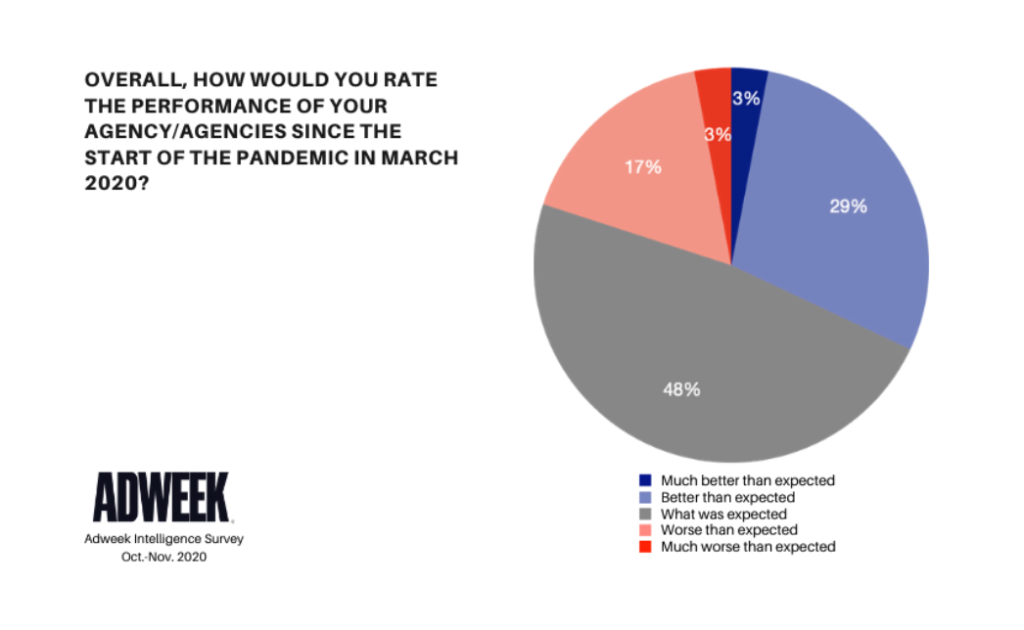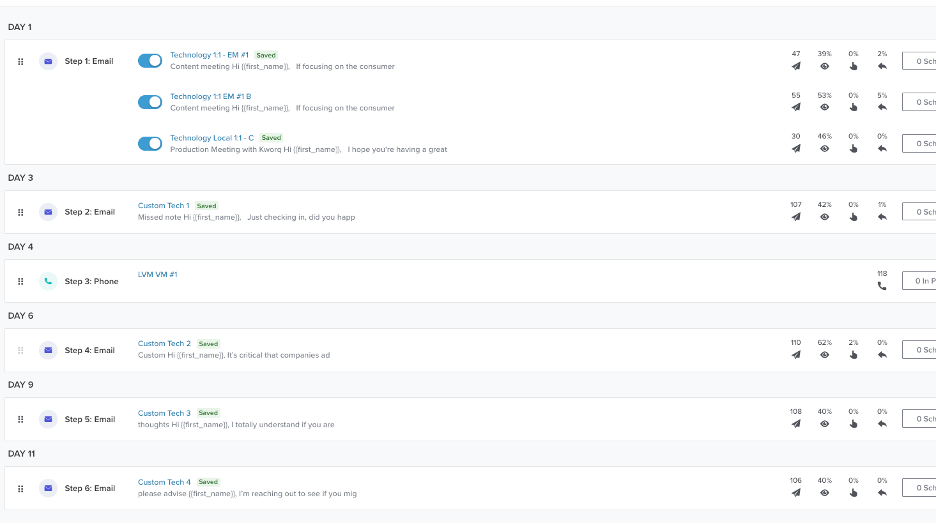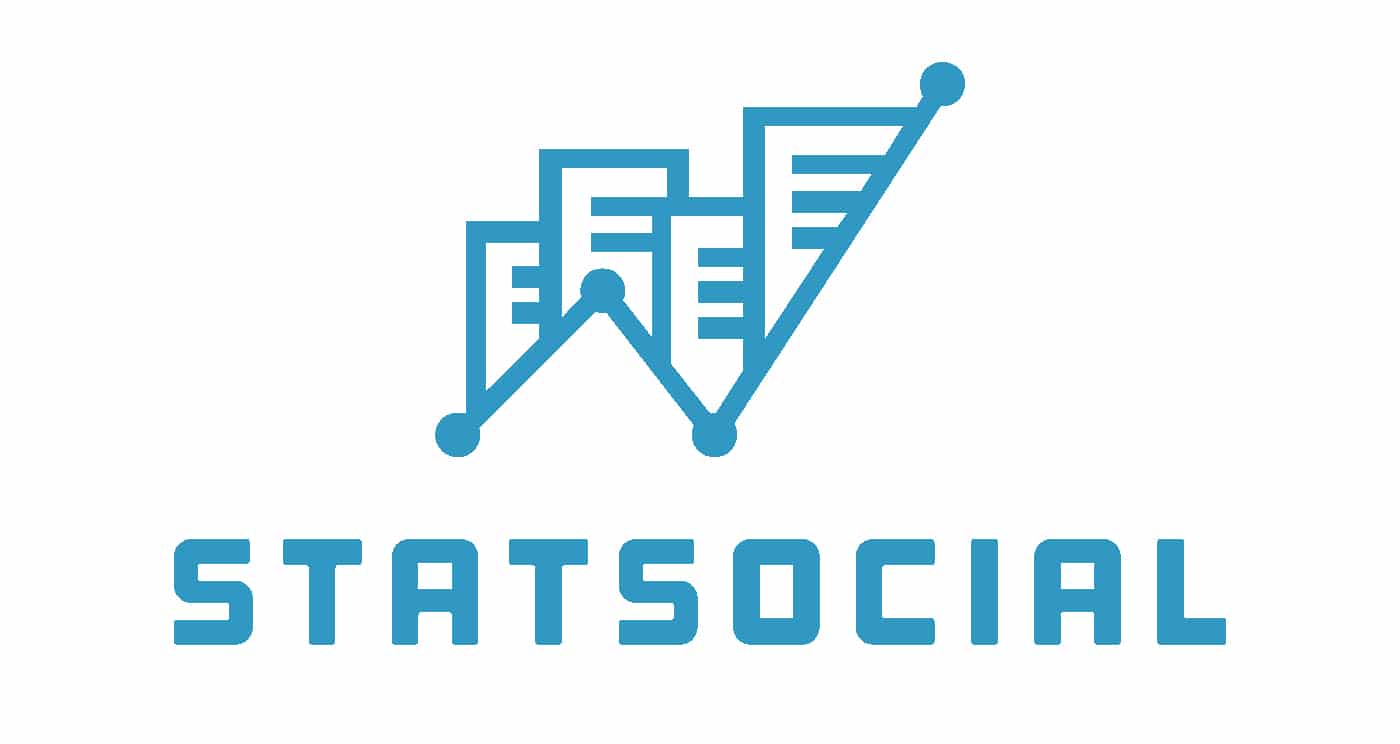Agencies that follow the 40% rule are more successful in consistent growth over time.
The rule is simple: No more than 40% of your agency’s revenue can come from one client.
The better you understand your current revenue and forecast of new revenue, the better prepared you are for bumps along the way. It also ensures you don’t end up with a client whose loss would significantly affect the health of your agency. Trust me, I know there is nothing more rewarding than landing a large client. It allows you to grow your resources and capabilities and provides an influx of new revenue. However, leaning on that huge client without balancing their portion of your total billings can also bring future challenges.
In 2017, we hosted a webinar focused on driving agency growth and building value before the sale, and the information is just as relevant today. In the webinar we highlight how to follow the agency 40% rule and stress the importance of why you need to live by it.
If your agency is not following the 40% rule, you have an elephant in the room.
Think about it: what happens when the business from your major client dries up? Or it could simply go away due to things entirely out of your control – your work is great, they love you, but then there is a corporate change in agency relationships. This situation is one nearly every agency faces, especially during key growth phases. I’ve worked with many who got their start by landing one big client who contributes most of the revenue and forgot about the 40% rule until things were in the danger zone.
Here’s how to ensure your agency doesn’t fall into the trap.
There are two primary strategies to help balance your revenue streams – proactive new business development and active diversification. A well-balanced agency will have solid programs in place for both. These programs will create a planned buffer of new business opportunities in a robust pipeline for new clients, and generate organic revenue growth from a diverse base of existing clients.
New Business Development
A focus on client service provides your agency the best opportunity to do work, however, by its very nature, the focus on billable hours often gets in the way of an active new business program, dedicated resources, and an overall strategy for developing new business. Agencies that find a balance between client service and self-preservation typically have a proactive new business development program.
A healthy new business development program typically includes the following three steps:
1. Clarify Your Positioning
To potential prospects, agencies often look quite similar. This isn’t surprising since most agencies market themselves based on their list of services and projects. Your positioning is ultimately about creating a unique impression of your agency in the mind of your prospects. It provides the “elevator pitch” that could lead to your next client.
Positioning allows you to clearly define the unique niche your business will serve. Achieving simple ad agency positioning requires you to answer these essential questions.
- What verticals have you worked with where you’ve seen the most success?
- In what areas does your knowledge of the customer truly make you unique?
- What types of proprietary tools or methodologies has your firm developed that may be unique?
Creating intellectual capital and content is much easier with clear positioning. You’ll also find it makes building your own strategy much more effective.
2. Create Intellectual Capital
Well-deployed intellectual capital can dramatically increase awareness of your agency by leveraging the strengths of your team. The right intellectual capital involves tapping the knowledge of each team member within your organization and helps stir interest in your agency, strengthen current relationships and ultimately attract new clients.
Like knowledge, intellectual capital is gained through experience or association. It’s basically a way of sharing what you’ve learned by teaching it to others. Intellectual capital also demonstrates your expertise in a specific category and provides credibility for your agency. In its truest sense, intellectual capital helps explain why your agency exists and what is important to your team and your clients.
Minnesota-based agency, Brandpoint, leverages their intellectual capital in a big way with their Brandpoint Blog. Brandpoint’s speciality is content marketing and provide expertise from their team regarding content news, developments, best practices and emerging ideas.
3. Develop an Inbound Marketing Methodology
Brands are bombarded by various agencies, data analytics providers, and business consultants with new solutions every single day. Despite the competition, most agencies still promote themselves with their client portfolio and awards they’ve achieved. Instead, what if you focused on providing a clear view of your agency and what you stand for?
The best way to accomplish this is by demonstrating your knowledge and providing it to others. A dedicated inbound marketing program will allow you to create a systematic approach to reach your prospects. In addition, it can help you evaluate the most efficient content and distribution platforms.
By sharing your knowledge and educating your prospects, you are demonstrating your proficiency, creating awareness and establishing trust. Inbound marketing can be the catalyst for a consistent flow of new ideas and new potential prospects.
Diversified Revenue Streams
I know I have said it before, but diversification is key. Diversification of your revenue streams allows you to gain more fiscal predictability through more efficient income. In the book The Marketing Agency Blueprint, Paul Roetzer provides three primary options of diversified revenue streams including software development, education and publishing, and VAR programs.
Software and product development are an alternate revenue stream for agencies who have the resources to build and market these types of products. Therefore, by generating consistent recurring revenue and licensing fees, software products provide a predictable business model to offset the ups and downs of a service business.
Developing a solid intellectual capital gives your agency the opportunity to monetize your knowledge and capabilities. Roetzer suggests online courses, webinars, digital publications or speaking engagements. All of these options are an opportunity for recurring revenue through education and publishing.
Value-added reseller (VAR) programs are those in which your agency provides services for third-party products. Your agency can earn compensation through licensing fees and referrals by providing your expertise on products and tools you are already using. Many marketing software companies offer affiliate programs including Eloqua, Marketo, HubSpot, ConstantContact and MailChimp.
Consider all of this the next time you’re close to landing a large new client.
If you find yourself with an elephant in the room and not following the 40% rule, it’s probably time to begin thinking about your new business development plans. Waiting on referrals will kill your new business efforts, however, putting a new business strategy in place will consistently generate new clients for your team. Once your strategy is supported by consistent implementation, your agency will be protected from the extreme highs and lows of client wins and losses.
All of this should be an absolute priority for any agency that wants to be more stable, more predictable, and more valuable.




















